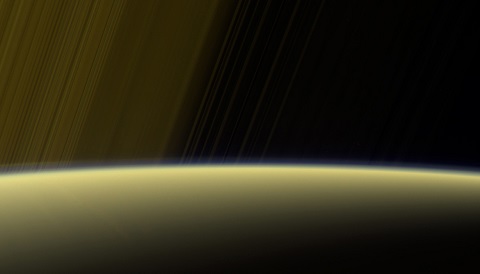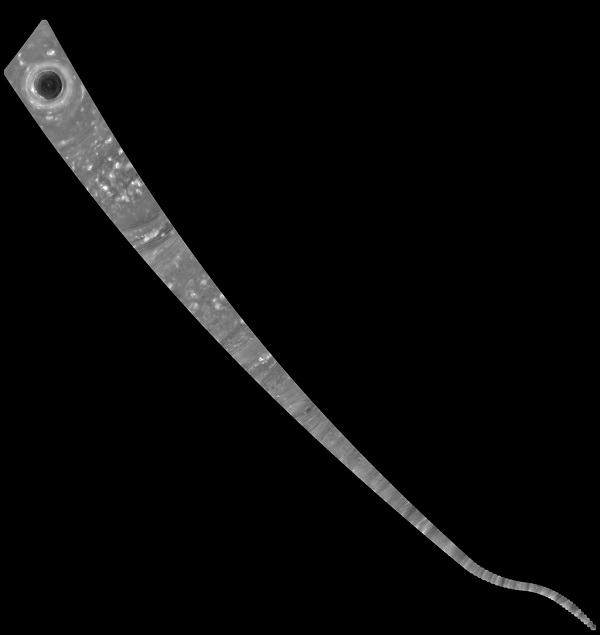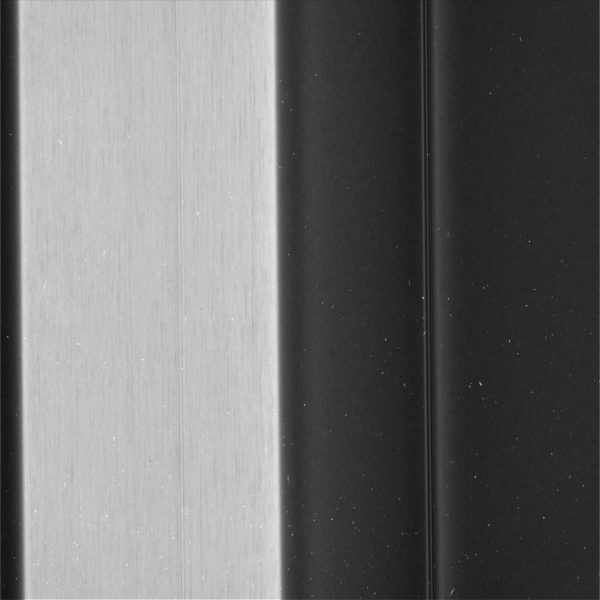Saturn keeps its secrets as NASA's Cassini spacecraft heads towards its September grand finale.

NASA/JPL-Caltech/Space Science Institute
The ringed planet seems to be hanging on to at least some of its secrets right up until the very end.
NASA's Cassini spacecraft is now in the midst of a series of dramatic weekly Grand Finale dives through the gap between Saturn and its ring system. This follows a series of wider Ring Grazing Orbits spanning late 2016 into earlier this year, and will climax with the end of the mission itself in September.
Cassini is performing beautifully in the final leg of its long journey," says Earl Maize (NASA-JPL) in a recent press release. "Its observations continue to surprise and delight as we squeeze out every last bit of science that we can get."
Cassini is now in the 16th of a total of 22 weekly orbits, coming as close as 1,900 miles to the planet's cloud tops. This allows the mission to not only examine the magnetic field of the planet close up, but also allows Cassini a chance to sample the upper atmosphere of the planet itself.
These final orbits are a bit of a risk, as the spacecraft must thread its way through the ring plane at 77,000 mph. This elevated risk is one reason that researchers have held off on the exploration of Saturn close-up until now.

NASA / JPL-Caltech / Space Science Institute
Science at Saturn
One of the strangest recent findings from Cassini is what it didn't find: much of a discernible difference in tilt between Saturn's rotational axis and its magnetic field. In other planets, this tilt sustains the dynamos that emanate from liquid metal cores. Think of Earth, where liquid iron in its outer core generates our protective magnetic field — and a magnetic pole offset from Earth's true, rotational pole.
Cassini's magnetometer has found that Saturn's magnetic pole — in this case, generated by liquid metallic hydrogen in its core — is remarkably well aligned with the planet's rotational axis, down to less than 0.06 degrees. This finding flies in the face of how we think planetary magnetic fields are generated, suggesting that we don't understand Saturn's internal structure as well as we thought we did.
The surprisingly good alignment also masks the true length of Saturn's day. While we see the planet's cloud tops spinning once every 10 hours, 14 minutes near the planet's equator, a gaseous planet doesn't all rotate at the same rate so its rotation changes at the poles. A discernible tilt in the magnetic field would make the planet wobble, betraying its true rotational speed. Since scientists haven't been able to measure the wobble, the length of Saturn's day remains a mystery.
Plus, check out these amazing new views of aurora over the limb of Saturn, shot by Cassini on July 20, 2017:
Taking Samples of Saturn
On the first plunge through the ring plane, Cassini went “dish first,” using its large radio antenna to protect the bulk of the spacecraft while a few instruments made tentative peeks out around the edges to "sniff" the local environment. But as researchers discovered the gap between the planet and the rings is — at least where Cassini sampled it — surprisingly devoid of debris, engineers relaxed constraints somewhat on subsequent passages, bringing other instruments to bear. Cassini has since used its Ion and Neutral Mass Spectrometer (INMS) to sample the tenuous exosphere of Saturn's atmosphere and its Cosmic Dust Analyzer (CDA) to sample the few ring particles obtained on each pass.

NASA / JPL-Caltech / Space Science Institute.
What's next? Cassini will dive deeper still on final passes and the INMS is expected to get better atmospheric samples on each pass. And of course, we've getting some thrilling up close images of Saturn itself, with more to come.
Launched two decades ago in 1997, the Cassini mission promises a thrill ride to the very last moment, just over one month away. Cassini is on a ballistic date with destiny, meaning that even if the spacecraft were to fall silent, destruction via atmospheric entry on September 15th is assured. But the science results will continue to pay off for years to come.
Not bad for a spacecraft launched last century.
 1
1









Comments
Pacilio Hugo
July 31, 2017 at 8:04 pm
Hi, it is impressive that in the final stage of the mission we will receive images never seen before, and the scientific legacy of the Cassini probe will be immeasurable.
You must be logged in to post a comment.
You must be logged in to post a comment.